Shock-induced heating and millisecond boiling in gels and tissue due to high intensity focused ultrasound
- PMID: 20018433
- PMCID: PMC2815111
- DOI: 10.1016/j.ultrasmedbio.2009.09.010
Shock-induced heating and millisecond boiling in gels and tissue due to high intensity focused ultrasound
Abstract
Nonlinear propagation causes high-intensity ultrasound waves to distort and generate higher harmonics, which are more readily absorbed and converted to heat than the fundamental frequency. Although such nonlinear effects have been investigated previously and found to not significantly alter high-intensity focused ultrasound (HIFU) treatments, two results reported here change this paradigm. One is that at clinically relevant intensity levels, HIFU waves not only become distorted but form shock waves in tissue. The other is that the generated shock waves heat the tissue to boiling in much less time than predicted for undistorted or weakly distorted waves. In this study, a 2-MHz HIFU source operating at peak intensities up to 25,000 W/cm(2) was used to heat transparent tissue-mimicking phantoms and ex vivo bovine liver samples. Initiation of boiling was detected using high-speed photography, a 20-MHz passive cavitation detector and fluctuation of the drive voltage at the HIFU source. The time to boil obtained experimentally was used to quantify heating rates and was compared with calculations using weak shock theory and the shock amplitudes obtained from nonlinear modeling and measurements with a fiber optic hydrophone. As observed experimentally and predicted by calculations, shocked focal waveforms produced boiling in as little as 3 ms and the time to initiate boiling was sensitive to small changes in HIFU output. Nonlinear heating as a result of shock waves is therefore important to HIFU, and clinicians should be aware of the potential for very rapid boiling because it alters treatments.
2010 World Federation for Ultrasound in Medicine & Biology. Published by Elsevier Inc. All rights reserved.
Figures
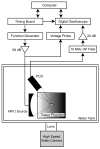

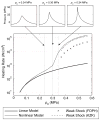
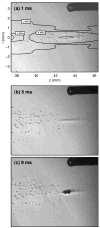
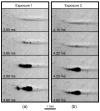

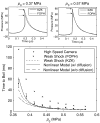




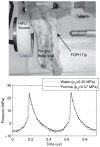
References
-
- Chen W, Lafon C, Matula T, Vaezy S, Crum L. Mechanisms of Lesion Formation in High Intensity Focused Ultrasound Therapy. IEEE Ultrason Symposium. 2002;2:8–11.
-
- Clarke R, ter Haar G. Production of harmonics in vitro by high-intensity focused ultrasound. Ultrasound Med Biol. 1999;25(9):1417–1424. - PubMed
-
- Clement G, McDannold N, Hynynen K, editors. Therapeutic Ultrasound: 5th International Symposium on Therapeutic Ultrasound. Boston, MA. October 27–29, 2005; AIP Conference Proceedings; 2005.
Publication types
MeSH terms
Substances
Grants and funding
LinkOut - more resources
Full Text Sources
Other Literature Sources
Medical
Research Materials

